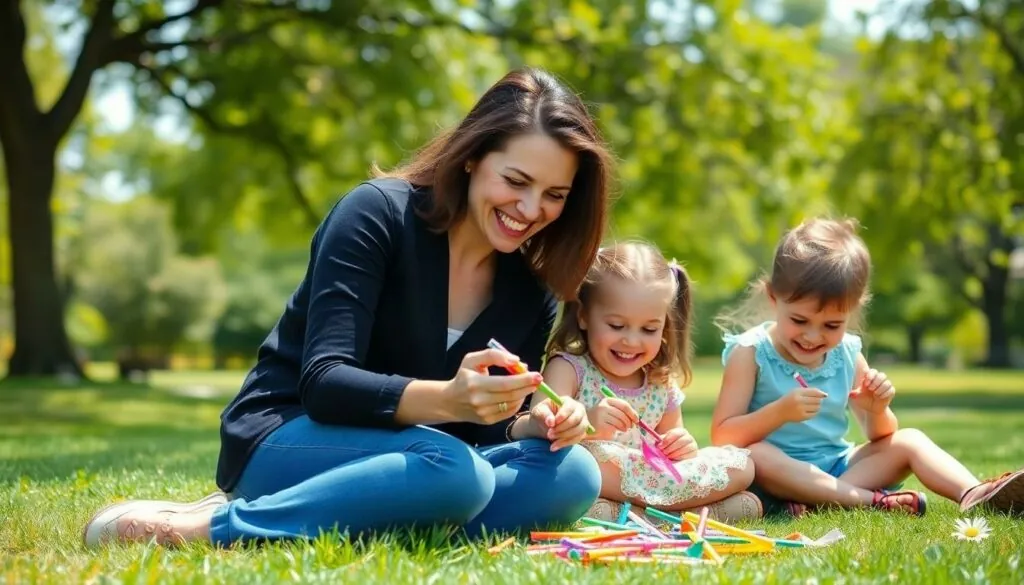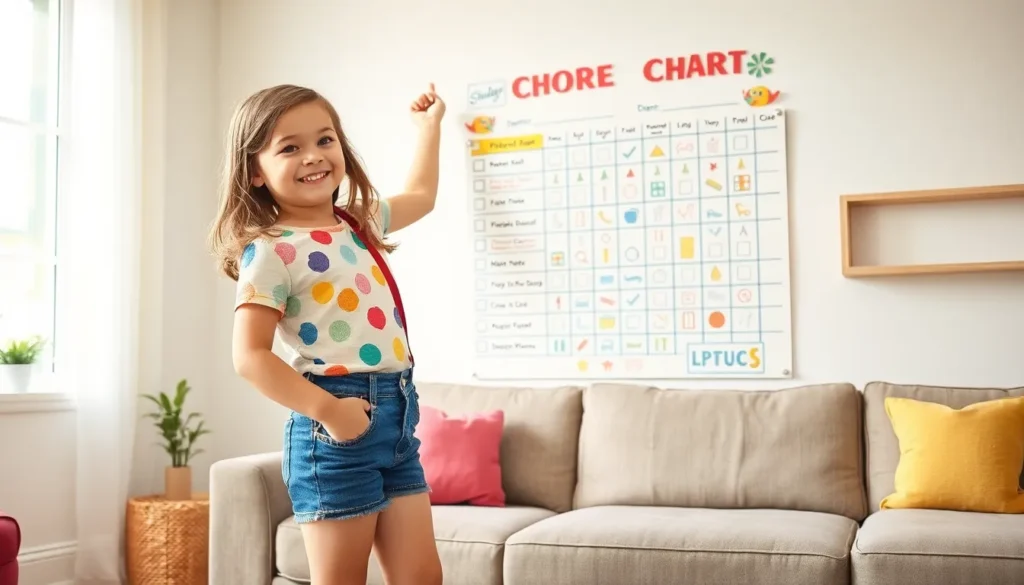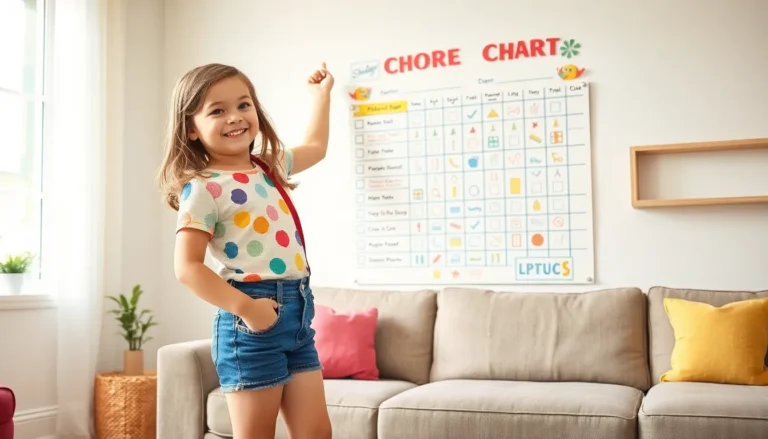Table of Contents
ToggleNavigating the world of children can feel like trying to solve a Rubik’s Cube blindfolded. One minute you’re the hero of the playground, and the next, you’re dodging flying toys and negotiating snack trades. But fear not! Mastering the art of connecting with kids isn’t as daunting as it seems. With a sprinkle of humor and a dash of patience, anyone can become the go-to adult in a child’s life.
Understanding Children
Understanding children involves recognizing their unique perspectives and emotions. Engaging with them requires patience and insight.
The Importance of Empathy
Empathy plays a crucial role in building relationships with kids. It allows adults to connect with children’s feelings and experiences. Listening actively cultivates trust. Expressing understanding through verbal cues supports open communication. Children appreciate it when their emotions are validated. Practicing empathy fosters a nurturing environment. It encourages children to share their thoughts and feelings freely, leading to deeper connections.
Different Developmental Stages
Recognizing different developmental stages enhances interactions with children. Infants rely on caregivers for basic needs. Toddlers show exploration and independence through play. Preschoolers begin to develop language skills and social connections. School-age children exhibit growing cognitive abilities, allowing for more complex conversations. Adolescents grapple with identity and emotional challenges. Understanding these stages enables tailored communication strategies. Providing appropriate support during each phase fosters a positive relationship.
Effective Communication

Effective communication plays a critical role in connecting with children. Understanding their needs and emotions enhances relationships, making interactions smoother and more enjoyable.
Active Listening Skills
Active listening involves fully engaging with what a child is saying. Focusing attention on their words fosters trust and encourages openness. Avoid interrupting, as this can diminish their willingness to share. Reflecting back what they express validates their feelings and shows understanding. Asking open-ended questions prompts deeper discussions, allowing them to articulate their thoughts. Children benefit from knowing their voice matters. Observing non-verbal cues also offers insights into their emotions and thoughts. This skills set creates a safe space for children to express themselves freely.
Engaging Conversations
Engaging conversations capture a child’s interest and foster connection. Starting with simple topics they enjoy makes discussions appealing. Using humor adds a layer of fun, encouraging spontaneous dialogue. Staying curious about their world sparks their enthusiasm to share. Incorporating storytelling captivates their imagination and creates memorable interactions. Adjusting language to suit their comprehension level strengthens understanding. Integrating play into conversations keeps them light-hearted while facilitating learning. Celebrating their achievements during discussions boosts their self-esteem and encourages more sharing.
Building Trust
Building trust with children requires intentional efforts and an understanding of their needs. Establishing a solid foundation for relationships enhances communication and nurtures emotional security.
Creating a Safe Environment
Creating a safe environment encourages children to express themselves freely. Ensure spaces are physically safe, with no hazards to explore or play. Encourage open communication by being approachable and non-judgmental. Children thrive when they know their thoughts and feelings are respected and valued. Use simple language that resonates with their age. Incorporate play and imaginative activities to foster a sense of security. When kids feel safe, they are more willing to share their thoughts and experiences.
Being Consistent and Reliable
Being consistent and reliable builds a sense of stability. Children respond positively to routines and predictable responses. Follow through on promises, whether big or small, to demonstrate reliability. Acknowledge their feelings consistently, validating their emotions. Presence matters; even small, regular interactions strengthen trust. When they know they can depend on an adult, it fosters deeper emotional bonds. Establishing set times for activities can reinforce reliability, helping children feel connected and secure.
Fun and Playfulness
Engaging children through fun and playfulness fosters connection and trust. Structured activities enhance understanding and provide opportunities for shared experiences.
Activities That Foster Connection
Playtime activities such as arts and crafts, outdoor games, or imaginative role-play strengthen bonds with children. Incorporating teamwork in games encourages collaboration, resulting in shared laughter and enjoyment. Storytelling captivates a child’s imagination, inviting them to explore new worlds while also connecting with their feelings. Group activities, such as cooking or gardening, instill a sense of achievement and pride in children, enhancing self-esteem. Create diverse experiences by alternating between physical and creative play. This variety keeps children interested and makes interactions memorable.
Balancing Fun With Boundaries
Setting rules during playtime ensures that fun remains safe and constructive. Establish clear expectations before engaging in activities, helping children understand limits. Use positive language to communicate boundaries, making children feel supported rather than restricted. Explain the reasons behind rules, which helps them comprehend the importance of safety and respect. Implementing consequences for breaking rules reinforces accountability, allowing children to learn responsibility while enjoying their time. Consistent enforcement of boundaries during play fosters stability and nurtures a trusting relationship.
Building strong relationships with kids requires a blend of patience empathy and creativity. By understanding their unique perspectives and emotions caregivers can foster trust and open communication. Engaging in meaningful conversations and actively listening to children not only validates their feelings but also encourages them to express themselves freely.
Incorporating fun and playfulness into interactions creates memorable experiences that strengthen bonds. Balancing enjoyment with clear boundaries helps children feel secure while learning responsibility. Ultimately the journey of connecting with kids is rewarding and fulfilling as it nurtures their emotional well-being and enhances their development. Embracing these principles can lead to lasting relationships that enrich both their lives and those of the adults involved.







